IAF test-fires Extended Range Version of Brahmos missile from SU-30MKI aircraft
Radhika Bansal
04 Jan 2023
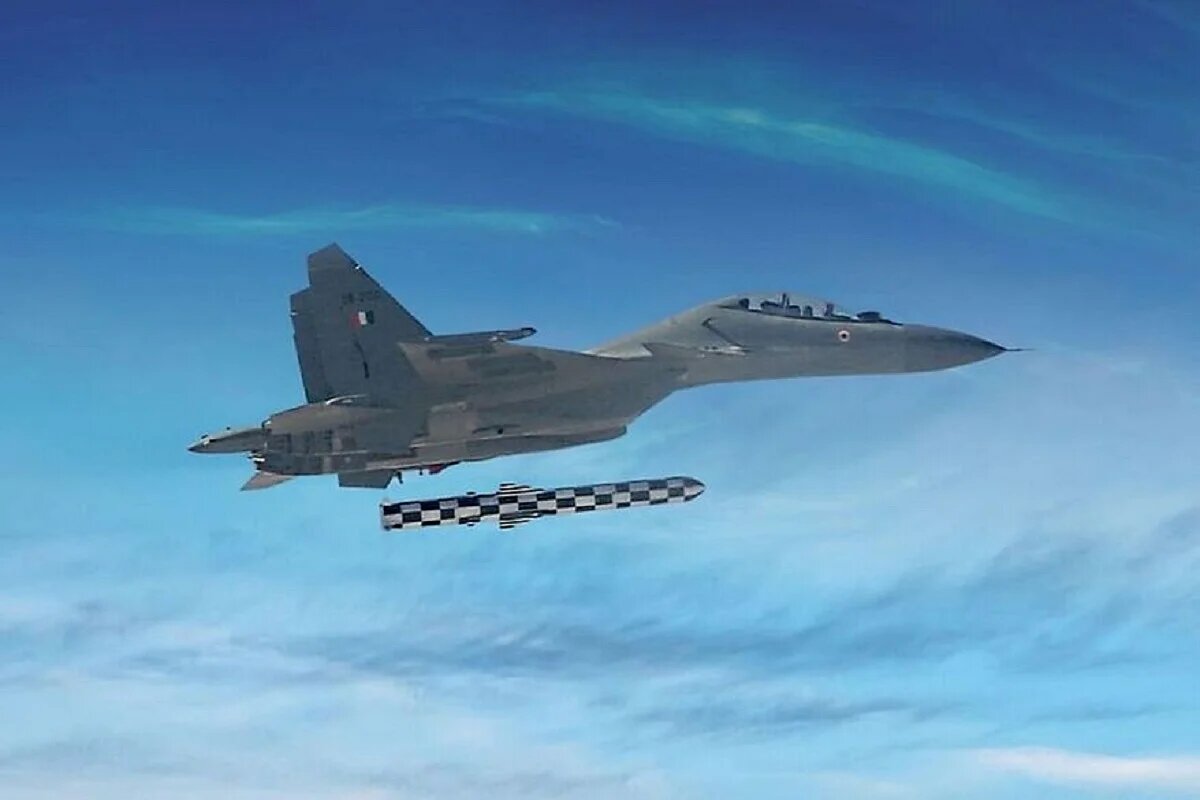
The Indian Air Force (IAF) successfully test-fired the Extended Range Version of Brahmos Air Launched missile against a ship target from a frontline SU-30MKI aircraft. The maiden test of the extended range of the Brahmos Air Launched missile was conducted on May 12 earlier this year, the force said.
A statement from the IAF Thursday read, “The missile achieved the desired mission objectives in the Bay of Bengal region. With this, IAF has achieved a significant capability boost to carry out precision strikes from SU-30MKI aircraft against land or sea targets over very long ranges. The extended range capability of the missile coupled with the high performance of the SU-30MKI aircraft gives the IAF a strategic reach and allows it to dominate the future battlefields.”
The dedicated and synergetic efforts of the IAF, Indian Navy, DRDO, Brahmos Aerospace Pvt Ltd and HAL have been instrumental in achieving this feat, the statement said.
https://twitter.com/IAF_MCC/status/1608408046614777860
While the Air Launched version of the BrahMos Supersonic Cruise Missile has been tested multiple times in the recent past, the Extended Range Version is said to have the capability of striking targets located at around 350 kilometres compared to around 290 kilometres for the initial version.
ALSO READ - IAF successfully test-fired a BrahMos missile from a Sukhoi fighter jet
The first test of the initial version of the Brahmos Air Launched Cruise Missile was conducted in 2017, making it a significant addition to the IAF’s operational capabilities from stand-off ranges.
Stand-off range missiles are the ones which are launched at a distance sufficient to allow the attacking party to evade defensive fire expected from the target area. For the firing of Brahmos from Sukhoi-30 MKI, the missile is gravity dropped from the fuselage of the fighter jet, and the two-stage missile’s engine is then fired up and it propels towards the intended target at the sea.
IAF test-fires Extended Range Version of Brahmos missile from SU-30MKI aircraft
Brahmos is the heaviest weapon to be deployed on India’s Sukhoi-30 MKI fighter aircraft, which has been modified by HAL to carry these weapon systems.
A combination of the names of the Brahmaputra and Moskva rivers, BrahMos missiles are designed, developed and produced by BrahMos Aerospace, a joint venture company set up by the Defence Research and Development Organisation (DRDO) and Mashinostroyenia of Russia. The first test launch of the initial version of Brahmos took place in 2001.
Various types of the BrahMos, including those which can be fired from land, warships, submarines and Sukhoi-30 fighter jets have already been developed and successfully tested and inducted since then.
Brahmos is the heaviest weapon to be deployed on India’s Sukhoi-30 MKI fighter aircraft, which has been modified by HAL to carry these weapon systems.
Cruise missiles such as BrahMos, called “standoff range weapons”, are fired from a range far enough to allow the attacker to evade defensive counter-fire. These are in the arsenal of most major militaries in the world. The BrahMos has three times the speed, 2.5 times the flight range and higher range compared to subsonic cruise missiles.
The sophisticated missile is already inducted into the Army and Navy. Many Brahmos missiles are now deployed along the Line of Actual Control (LAC) facing China. On November 30, the Army test-fired the extended-range Brahmos from the Andaman and Nicobar Islands.
An 800-km range variant of BrahMos, which is a conventional (non-nuclear) missile that flies almost three times the speed of sound at Mach 2.8, is also undergoing “developmental trials” at present. The air-breathing BrahMos has emerged as the “prime conventional strike weapon” for the armed forces over the years, with contracts worth over INR 36,000 crore already inked till now.
Read next
Aeroflot purchased 10 Boeing 777-300ER aircraft from an Irish leasing company that was under financial leasing throughout 2013 and 2014, and the airline will continue to work on other aircraft buyout deals. The method of payment is not mentioned. The announcement comes at a time the US and the European governments have imposed civil aviation and financial sanctions on Russia.
Aeroflot bought and acquired ownership of 10 long-haul Boeing 777-300ER aircraft, which since 2013 and 2014 were financially leased from an Irish leasing company,” said a company release.
The company clarified that the transaction was carried out following all applicable Russian and foreign regulatory authorisations. “On taking measures to settle legal relations with foreign lessors to ensure the transfer of ownership rights to the jurisdiction of the Russian Federation.”
Aeroflot will continue to work on implementing more aircraft buyout deals to maintain and expand the operation of its present fleet of foreign-made aircraft. According to the message, it confirms Aeroflot’s dependability as a counterparty that fulfils its contractual responsibilities responsibly.
Sanctions have not stopped Aeroflot from expanding its operations in Russia and overseas. In November, Aeroflot completely migrated its ticketing to the domestic Leonardo ticketing system. The Leonardo system is compatible with various international, regional, charter, and low-cost airlines. It offers a variety of IATA-compliant solutions and facilitates the automation of the bulk of routine activities.
Aeroflot announced in September its intention to acquire 339 Russian aircraft from United Aircraft Corporation (UAC). The acquisition consists of 210 MC-21 aircraft, 89 SSJ-NEW aircraft, and 40 Tu-214 aircraft for leasing from 2023 to 2030. The document indicates that the Group will receive its first two Superjet-NEW aircraft in 2023, followed by its first six MC-21 and seven Tu-214 aircraft beginning in 2024.
The MC-21 is a new type of medium-haul aircraft having a passenger capacity of 163 to 211. The aircraft caters to the broadest market sector for passenger transportation. The aircraft is designed by the Irkut Corporation’s Engineering Centre and constructed by the Irkutsk Aviation Plant. The application of composite wing and metal alloys, as well as the introduction of new generation on-board technologies, advanced aerodynamics, and the newest PD-14 engine, are the primary benefits of the MC-21. The Superjet 100 is a regional jet made by UAC.
Aeroflot transported 21.4 million passengers in 2021. (45.8 million passengers as Aeroflot Group, including subsidiaries).
Aeroflot is the largest airline in Russia. It is one of the world’s oldest airlines, and one of the most famous Russian businesses, founded 99 years ago. According to brand strategy firm Brand Finance, it has been rated the strongest airline brand in the world for five consecutive years.
Cirium On-Time Performance Review ranked Aeroflot among the top three most punctual mainline airlines worldwide in 2021.
Read next
At least 41 pilots failed mandatory alcohol tests in 2022, more than double compared to 19 cases reported the year before, according to data maintained by the Directorate General of Civil Aviation (DGCA). The number of cabin crew failing the preflight breathalyzer (BA) test saw a nearly threefold jump from last year, with 116 positive cases being reported this year as against 39 in 2021.
Both cockpit and cabin crew members must undergo a breathalyzer (BA) test before departure and after the arrival of an examination, flight to determine the concentration of alcohol in their blood.
Among the 41 pilots who failed the BA test this year, 35 were attached with commercial airlines. Similarly, 15 of the 19 pilots testing positive in 2021 were commercial pilots.
“While the remaining pilots tested positive were nonscheduled operators, five scheduled cockpit and eight cabin crew were reported as ‘missed BA test’,” said an official from the civil aviation ministry, requesting anonymity.
To ensure that pilots flying passengers and air traffic control officials guiding them are not under the influence of hard narcotics, DGCA began a psychoactive test of the flight crew and air traffic controllers (ATCO) this year.
According to the data, five aviation personnel — three pilots and two air traffic controllers — failed the drug test. The regulator also took more than 300 enforcement actions against airlines and individuals in general for several non-compliances.
“A total of eight aviation personnel had tested positive in the first round. However, three of them tested negative when the samples were sent to the US for the confirmatory test report,” a DGCA official said, also declining to be named.
Aviation experts said such cases could be brought down if the regulatory body started treating them as a criminal offence.
“According to the civil aviation rules (CAR), the crew’s licence is suspended only when he/she tests positive a third time and is off the roster for three months for the first two times,” said an industry expert.
Aviation safety expert Mohan Ranganathan said, “These cases can only be brought under control when they are treated as a criminal offence and action is taken for the first time itself.”
Last year, it was also reported that between January 2021 and March 2022, a total of 84 people working at 42 Indian airports failed alcohol tests. The DGCA stated that the aviation personnel covered under these rules included aircraft maintenance engineers, vehicle drivers who drive fuelling and catering vehicles, equipment operators, aerobridge operators, marshallers, personnel guarding aprons, and ground handling services and ATC personnel.
India maintains one of the strictest alcohol limits for airline crew in the world. The DGCA allows zero alcohol levels in the blood of airplane crew before a flight. It also mandates a 12-hour gap between flying an aircraft and the intake of an alcoholic beverage.
(With Inputs from The Hindustan Times)
Read next
IndiGo opens booking for Delhi - Instanbul route on wet-leased Boeing 777 aircraft
Radhika Bansal
03 Jan 2023
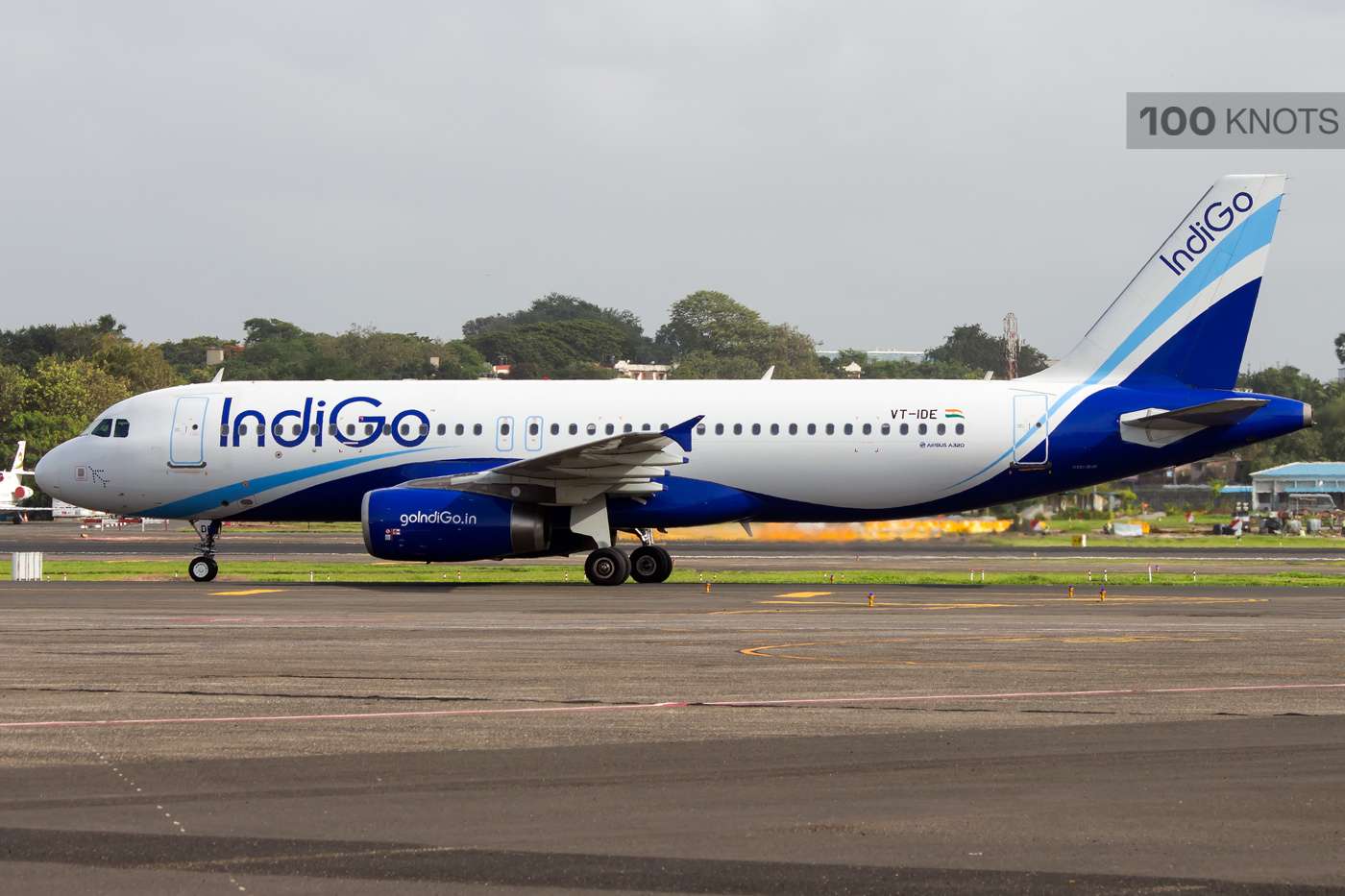
IndiGo, the country’s largest carrier by fleet and domestic market share, has opened reservations for flights operated by the Boeing 777-300ER with the booking engine reflecting the same.
The airline will operate the wet leased aircraft between Delhi and Istanbul - the hub of Turkish Airlines, from whom the airline has been wet leased. The high density aircraft is configured with 28 business class and 372 economy class seats.
The first hint of IndiGo’s widebody plans had come up in 2017. The airline expressed its interest to acquire the international business of Air India along with Air India Express. A lot of water has flown under the bridge since then, including the fall of Jet Airways and the pandemic.
One of the statements that Rakesh Gangwal, co-founder of IndiGo, had made was “we are generally of the view that it makes fundamental economic sense for us to enter the long-haul international market.” Gangwal is no longer a board member in IndiGo now after a fall out with co-founder Rahul Bhatia.
The airline which started in 2006 and propagated its single fleet type strategy and its benefit has since diversified into having multiple subtypes of the A320 family, the turboprop ATRs and now the wet leased operations with the widebody aircraft.
While the sub-fleet and new fleet kept getting added, the standard 180-seat configuration changed to have 78, 180, 186, 222 and 232 seats. This will be the first time there will be an addition of “Class of Travel” with the wet-leased B777s offering business class or will it, if it decides to not sell the business class and let Turkish Airlines do this part.
Widebody freeing up narrowbody
IndiGo got into a turbulence for approvals of widebody induction. Indian rules hitherto allowed wet lease for up to six months as a stop gap arrangement for proven shortage of aircraft. There indeed was a proven shortage since IndiGo was struggling to get all aircraft in the air - thanks to supply chain issues delaying replacement engines, but six months was too short a period. The rules have since been revised and IndiGo is the first beneficiary of this new rule, which allows a year of wet-lease
IndiGo’s Turkish ambitions have been stuck in bad luck. The start coincided with the closure of Pakistani airspace which meant that the non-stop flight became one-stop via Doha as the A321neo does not have the legs to fly as long. Eventually, the second flight started as well. Soon, the sector made news again for leaving behind baggage of passengers and just when everything seemed to stabilise, the pandemic hit. Starting January 1, the airline is splitting its operations between Delhi and Mumbai, with the Mumbai - Istanbul flight having a tech stop at Ras Al Khaimah.
With the Istanbul route being taken over by a widebody, it will free up one A321neo for operating elsewhere. This will also be the first time that IndiGo will offer hot meals on its flights!
The Turkish bilateral issue
Bilateral rights or Bilateral Air Services Agreement vary from country to country. Sometimes they are capped by seats, sometimes by frequencies and sometimes by a combination of both. In the case of India - Turkey bilateral, it is capped by frequencies - allowing 14 weekly frequencies from each side.
While the National Civil Aviation Policy talks about renegotiation when the Indian side reaches 80 percent mark, even with 100 percent utilisation from both sides - renegotiation has not happened. Geopolitics is partly to blame for that as Turkey has time and again taken stances at global bodies, which are detrimental to India’s interest.
With IndiGo operating widebody operations, Turkish gets a huge boost in the number of passengers since these flights are codeshare. It will take time to know how many seats on the flight are actively sold to feed the global network of Turkish Airlines via Istanbul and how many of the passengers end their journey in Turkey. One does not know if Turkish offered a sweet deal on the planes to IndiGo as this would help the airline get additional traffic and aim at salami slicing traffic from the Middle Eastern carriers.
Widebody and LCC - unproven combination yet
Low cost carriers inducting widebody aircraft has not resulted in great results thus far. From Wow Air to Norwegian - there have been a lot of skeletons. Some of the biggest carriers like Ryanair and Easyjet have stayed away from this and stuck to a single fleet type for ages.
Closer home though AirAsia, with its subsidiary AirAsiaX as well as Cebu Pacific, VietJet and Lion Air have been operating widebody aircraft. Not all of them are successful, with AirAsia X having seen closure in Indonesia and severe headwinds in its home market.India, as always, is different. The sheer volume of passengers is huge as compared to other countries in the region except China, and currently the volume is dependent on foreign carriers to a large extent. With Air India upping the game, IndiGo has to either join it now or wait for the XLRs to arrive in 2024 or beyond. The wet lease arrangement seems to be in the “everything in-between” mode of testing the waters before taking a plunge.
(With Inputs from MoneyControl)
Read next
Brussels Airport and Brussels Airlines ring in the new year with the first delivery of SAF via the NATO pipeline
Prashant-prabhakar
02 Jan 2023
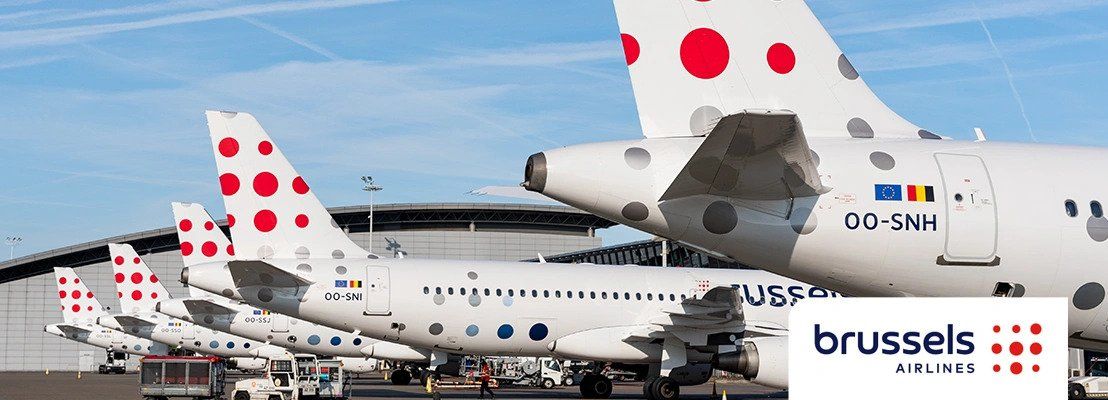
The NATO pipeline now makes it possible to transfer sustainable aviation fuels to Brussels Airport in a quick, secure, and CO2-free way (CEPS or Central Europe Pipeline System). The only airport in Belgium with complete access to this pipeline network is Brussels Airport, which has long requested the ability to use this pipeline to receive both kerosene and SAF. This has been achievable as of today because of NATO's cooperation. The first airline to use this technology to transport SAF on a flight is Brussels Airlines.
This is an important milestone in making aviation more sustainable at Brussels Airport. Having sustainable aviation fuels available at the airport has been a priority for us and we are delighted that, thanks to NATO's support, we can already achieve this at such short notice. As an airport, within the framework of our European Stargate program, we have expressed the ambition to aim for 5% SAF on total kerosene imports by 2026. That is faster than the European target, but we want to fully commit to this together with our airline partners. The fact that our home carrier Brussels Airlines is already taking the lead with a first order of SAF is a great start to realizing this ambition- said Arnaud Feist, CEO of Brussels Airport
The term SAF, or Sustainable Aviation Fuel, refers to a variety of sustainable aviation fuels. Compared to using fossil aviation fuel, SAF reduces greenhouse gas emissions by up to 80%* throughout the course of its lifetime. Brussels Airlines' Neste MY Sustainable Aviation Fuel is made from 100 percent renewable, sustainably generated waste and leftover raw materials, including used cooking oil and animal fat waste.
Representative | Honeywell
To achieve our climate goals, we will have to drastically increase the use of alternatives to fossil fuels in the coming years. Next to fleet renewal, sustainable aviation fuel is the most effective tool currently available to reduce emissions from air travel. Together with the Lufthansa Group, we have already invested in the production and use of SAF for several years. The fact that we can now transport the sustainable aviation fuel from the blending facility all the way to our aircraft at Brussels Airport in a fast and environmentally friendly way is an important step to increase the use of this type of fuel in the near future- said Peter Gerber, CEO of Brussels Airlines
For this trial operation, Brussels Airlines ordered 2,000 barrels of 1,000 liters each with a blend of 38% SAF. In order to enable Brussels Airlines to conduct its inaugural flights with SAF on January 1, the sustainable aviation fuel was carried by Brussels Airlines from Neste's blending facilities in Ghent via the CEPS pipeline to the fuel storage facility at Brussels Airport immediately after midnight.
Sustainable aviation fuel is the most effective tool currently available to reduce the emissions of air travel. Neste is working with partners like Brussels Airlines and the Lufthansa Group, airports and logistics providers to make SAF available across Europe and globally. Following permission by NATO to transport SAF on the CEPS pipeline system, we are proud to be the first to deliver SAF into the pipeline to Brussels airport. We look forward to using the largest pipeline system in Europe to supply other airports in the near future. Pipelines are the most efficient way to supply as Neste is scaling up SAF production capacity to 1.5 million tons annually in 2023- said Jonathan Wood, Vice President Europe, Renewable Aviation at Neste
SAF is a crucial tool for reducing aviation's environmental impact. Brussels Airport and its partners in the Stargate project are aiming for 5% SAF by 2026, while the European Commission (ReFuelEU) is working toward a requirement of 2% SAF from 2025 and 5% from 2030. It is a substantial supply optimization to have SAF readily available through the NATO pipeline and the previously existing infrastructure at the airport.
Representative | ecac-seac
A demographic survey and sensitization campaign will be employed as part of the Stargate project to educate and raise public awareness about the need to collect more leftover frying oil for SAF manufacturing. The use of SAF at Brussels Airport will continue to be pushed within Stargate. Now that a large-scale blending plant was no longer required, partners will suggest that smaller-scale biofuel and kerosene blending be researched and developed instead, with high mix ratios.
SOURCE: press.brusselairlines.com
COVER: Brussel Airlines
Read next
Air India to get a fresh brand identity with a revamped website and mobile app
Radhika Bansal
02 Jan 2023
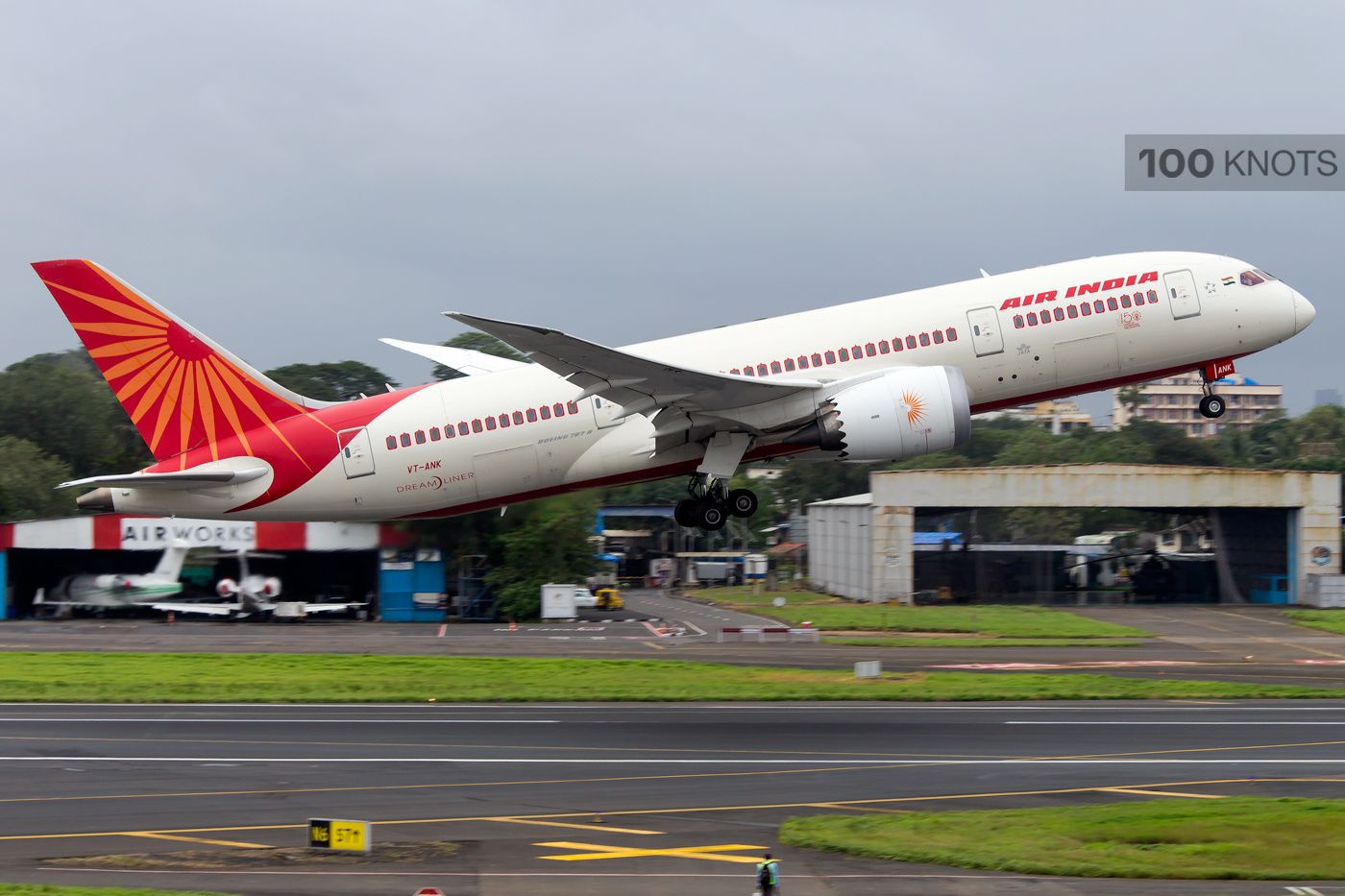
Air India will get a fresh brand identity with a revamped website and mobile app, Chief Executive Officer Campbell Wilson said in a year-end note to employees.
“We are at the business end of Q4 now and it has been quite a year. Notably, we launched Vihaan.AI -- our transformation roadmap in September and we’ve been firing on all cylinders ever since. We are currently taxiing as planned with 22 initiatives on our agenda in various stages of progress. Thanks to our collective efforts, we are well on schedule,” he said about the Tata group airline.
“It will take us a few years before we attain the world-class heights to which we aspire. But we have made a fantastic start, and you can all be proud of what has been achieved so far,” Wilson said.
He listed brand refresh as an upcoming milestone for the airline. He also mentioned that the airline has onboarded world-class brand and product design agencies but did not divulge further details. The airline’s owner, Tata Sons, has roped in UK-based brand and design consultancy firm Futurebrands to devise a new brand strategy for its airline, a media report said earlier this month. Futurebrands has worked on the rebranding of carriers, such as American Airlines, and this initiative is being planned alongside the integration of group airlines.
Wilson, a New Zealander, took charge of Air India in July and he leads the airline's five-year plan called Vihaan. The plan includes fleet and network growth and improvements in customer service to increase market share and put the airline “on a path to sustained growth, profitability, and market leadership”.
The airline has announced it will lease 36 planes and add three new routes, with 10 more in the pipeline. It has hired more than 1,200 employees across functions for its expansion. It is negotiating with both Airbus and Boeing for planes.
The Tata group is integrating its four airlines into two: Air India and Air India Express.
Wilson said upcoming milestones for the airline include a future-ready organisation structure and team co-location in new offices. It has already initiated the process of rolling out digital HR solutions for employees. An employee survey is being carried out to get feedback on Vistara’s integration with Air India. Vistara is a full-service carrier co-owned by Tata Sons and Singapore Airlines.
Earlier in the year, it was announced that Air India, Air India Express, and AirAsia India offices will shift to a new facility in Gurugram by March 2023. The move to consolidate workplaces is an integral part of the transformation agenda by improving collaboration among staff and more easily adopting technology, the airline said.

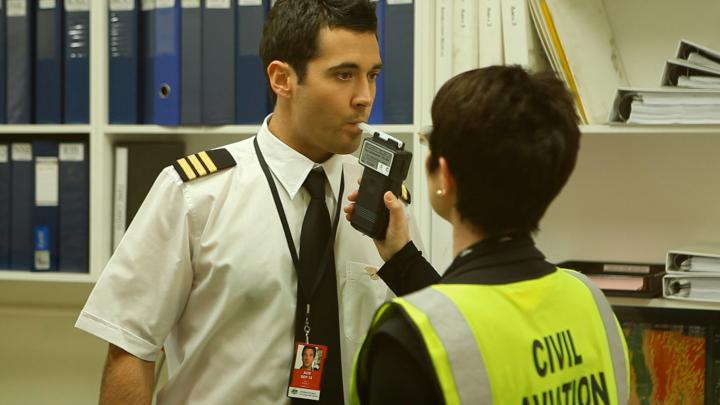

Comment